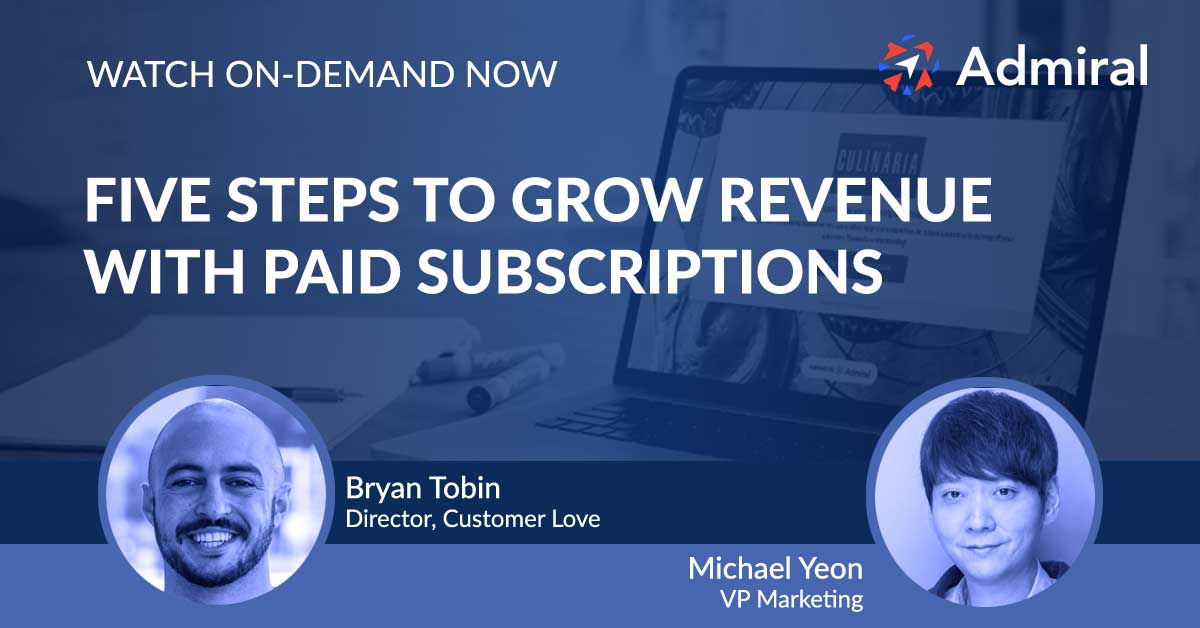Paywalls and digital subscription use has grown significantly in the past decade, for large online publishers such as NYTimes and Boston Globe, as well as hyper-focused sites for finance, sports, and more.
New questions and innovations abound regarding types of paywalls, their effectiveness, and how to drive digital content subscriptions.
Publishers need to evaluate soft paywalls vs hard paywalls vs metered or dynamic, at times using a mix to achieve optimal conversions across visitor segments.
Here are the major paywall types, paywall definitions, benchmark data, and help to get started with paid subscriptions and reader revenue.
Paywall Questions Answered:
- Is the subscription model popular for publishers? (chart)
- What is a paywall?
- What is a digital subscription?
- What are some add-ons or perks offered with digital subscriptions?
- What is the average price of a digital subscription?
- What is a soft paywall?
- What is a metered paywall?
- What is a paywall “stop rate”?
- What is the average number of articles publishers should set for their metered paywall?
- What is a hard paywall?
- What is a leaky or porous paywall?
- What is a dynamic paywall?
- What are common factors of digital subscribers?
- Do Paywalls Work?
- How can I set up a paywall?
In recent surveys by Reuters Institute show that 76% of publishers rate growing digital subscription revenue as more important than ad revenues. In this article we've provided answers to questions from the most basic paywall definition to issues heavily researched by leading digital industry institutes.
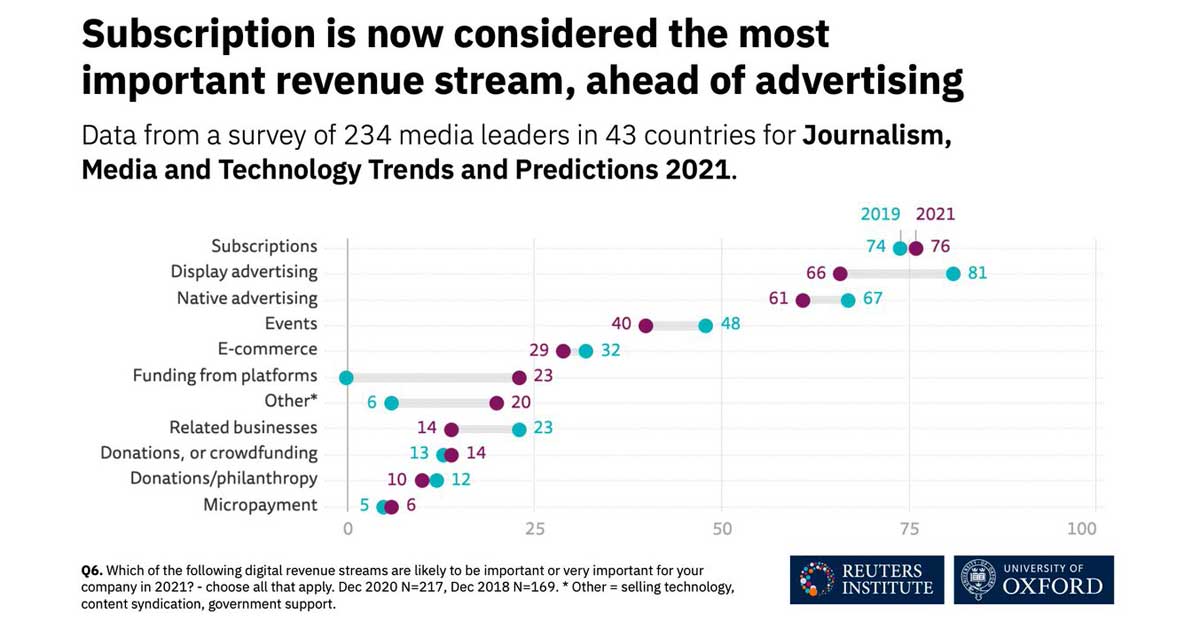
Want to see real success numbers from paywall installations?
Submit a paywall demo request:
Admiral can help publishers get started quickly with paywall setup, digital subscription management, and visitor engagement options. In less than a week publishers can begin testing subscription price points and offers, and using a one-tag, easy and fast deployment.
A paywall is a web page that restricts visitor access to further content unless the visitor pays for a subscription. As such, a paywall is a form of digital access control, as well as revenue diversification to fit varied visitor preference.
Paywall software often offers multiple subscription types, such as monthly vs annual, or for a select premium set of content.
Recurring revenues via a paid subscription are a common goal of digital publishers. However, paywalls can be used to offer access to content incrementally via an exchange of value that best fits each visitor. For example, a website could offer a month of access to a user for signing up to an email newsletter, or by agreeing to an ad-lite experience to access further content.
What is a digital subscription?
A digital subscription provides access to all or a set of content on a publisher’s website, and may also include exclusive content for subscribers, as well as access to the publisher’s mobile app.
Some subscriptions also unlock unique experiences, like ad-free content, exclusive access to journalists, and more.
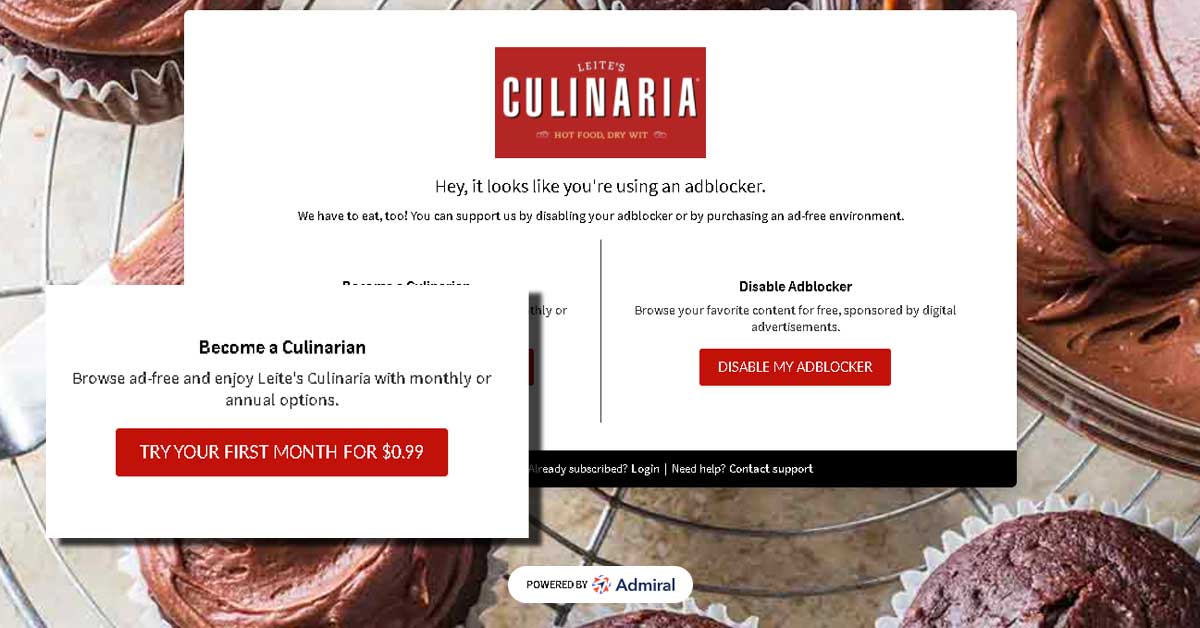
What are some add-ons or perks offered with digital subscriptions?
Online subscriber benefits may include an ad-free or ad-lite experience, commenting access, rewards programs, charitable donation support, giveaways, newsroom tours, or even access to journalists at live events.
The Newspaper Association of America estimated that 29% of larger news publishers offer perks with a digital subscription.
What is the average price of a digital subscription?
According to a survey of 98 US news organizations by the American Press Institute, the average price for a digital subscription was $3.11 per week. The averages varied by model; publishers using a metered paywall model averaging $2.97, freemium models averaged $3.52, and a few using a hard paywall model averaged $4.43.
What is a soft paywall?
A soft paywall allows users to access some digital content based on criteria set up by the online publisher. This approach allows visitors to experience the quality of site content before being required to subscribe. The most common form is a metered paywall.
A metered paywall allows access to a set number of articles per month before requiring a subscription.
Publishers can test the number of articles offered to optimize subscription conversions for their audience. Paywall metering is less disruptive to casual visitors and can convert 5-10% of the most engaged readers into paying digital subscribers, according to research from the Lenfest Institute.
What is a paywall “stop rate”?
The stop rate is the percentage of website visitors that hit a subscription paywall when they have reached the metered limit of free articles.
(# of visitors stopped by a paywall in a given month) / (# of unique visitors in the month)
What is the average number of articles publishers should set for their metered paywall?
The average stop rate has been dropping as publishers tighten their metered paywall limits. The most recent data show an industry norm of 5 articles per month meter limit for the most successful publishers.
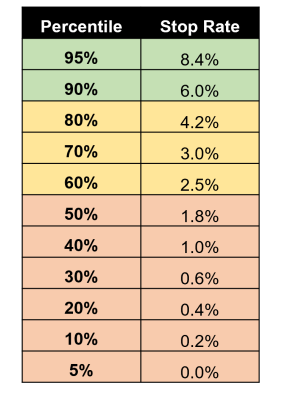
For a sustainable digital content business, 5-10% of the most engaged visitors are typically willing to subscribe to digital content.
Publishers should monitor the behavior of their most engaged users and set a paywall meter limit which does not discourage casual visitors, but catches monthly regular readers. A recent Pay-meter Playbook white paper by Harvard’s Shorenstein Center for Media and Lenfest Institute, suggest many publishers are still too lax with meter limits.
What is a hard paywall?
A hard paywall script prohibits visitors from viewing any content without a subscription.
The hard paywall can be the most difficult to circumvent, but also the riskiest. Sustainable hard paywalls are rare, mostly leveraged by publishers that already dominate their markets, target a niche audience, and/or provide added value to their content.
Want to find out if Admiral Paywall and Subscriptions Management
makes sense for your website?
Let's talk. Request a demo today:
What is a leaky or porous paywall?
Paywall software that allows exceptions, intentional or otherwise, to the strict metered article limit. Also used to describe paywalls with a very generous article limit, or freemium models.
According to a study of top news and magazine sites, Columbia Journalism Review reports that there are many ‘holes’ in paywalls.
Examples include:
- Not counting the first article read towards the meter limit when the visitor is from a search result,
- Allowing digital content to be accessed for free from Twitter,
- Removing the paywall limit during breaking news stories or local emergencies, or
- Not catching users that delete cookies or use incognito browsing.
What is a dynamic paywall?
A dynamic paywall is data-centric and personalized, in contrast to the one-size fits all hard paywall or standard metered model. It does not offer the same paywall, offer, or meter limit to every visitor or at the same meter limit.
Instead, the dynamic paywall seeks to identify particular behaviors or audience segments and maps a more relevant digital subscription offer.
Dynamic paywall approaches have been implemented by New York Media, New York Times, and Hearst Newspapers but are still fairly new to the industry. Swiss newspaper Neue Zürcher Zeitung’s (NZZ) conversion rate has grown subscriptions five-fold in the last three years using a dynamic approach.
An advanced version of dynamic metering that offers value exchanges beyond standard monetary subscription offers are sometimes called multi-dimensional metering (MDM).
MDM avoids the risk of scaring away potential subscribers by asking to “get married on the first date”.
Instead of focusing on a paid relationship as a first step for all segments, MDM grows visitor relationships via a variety of smaller value exchanges. Examples include email signups, social follows, web notifications, privacy consent and more, in an intelligent way that optimizes the relationship and revenue growth.
In the below example, Big Think offers visitors the option to continue viewing content with their adblocker on, if they will sign up for a newsletter. Though the adblock user is not offering any monetary compensation, and the website could prevent further access, they are allowing the access to content in exchange for a small commitment, as a step towards building a strong relationship.
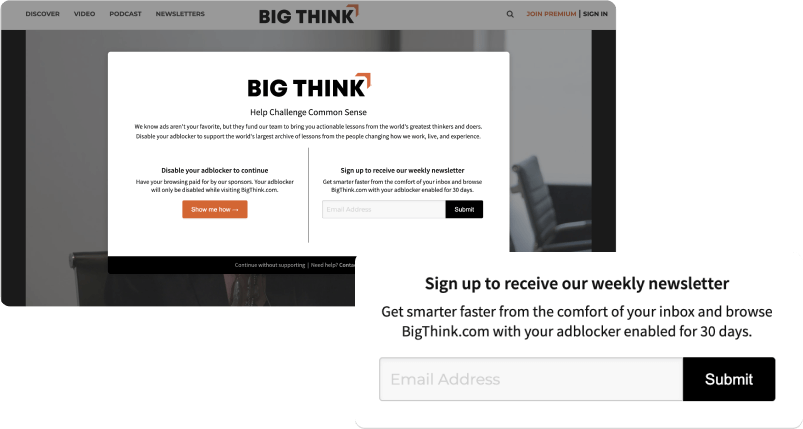
MDM was developed by Admiral, combining their paywall service provider expertise with adblocker engagement, donation campaigns, and other relationship building modules. By including paywalls within a digital experience platform like Admiral, publishers can benefit from AI and machine learning across the visitor behaviors at each touch point.
What are common factors of digital subscribers?
American Press Institute reports the following factors across a variety of digital paywall converters:
- Most live in urban/suburban areas
- Access to local news a the primary motivator
- Most regularly visited the website before subscribing
- Nearly half, 45%, first subscribed because of a promotion or free trial
- “News seekers” are a high-converting segment, often finding the article via search
- Quality articles and reliable, accurate facts were highly valued by subscribers
Do paywalls work?
Although paywall software has been around for 20 years, it didn't gain prominence until 2011-2012 with the launch of the New York Times metered paywall. Today over 76% of US digital news publishers have a paid content subscription model in place.
Norms are a moving target as publishers continue to experiment with paywall metering, subscription pricing, deeper analysis of visitor segments, and the types of content needed for paid subscription success.
Top performers have seen success at growing subscriber revenues year over year. New York Times has grown 3.8 million subscribers since 2011 with over one billion in overall subscription revenue last year. The Times of London now has over 500,000 digital subscribers, surpassing print. The Seattle Times, with a more regional audience, has added 36,000 digital subscribers and believes consumer expectations are changing.
Even though the height of the COVID-19 pandemic, top news publishers were able to significantly increase their sustainable revenues via newspaper paywalls and subscription offers.
Wondering if paywalls and digital subscriptions are right for a smaller publication? Check out these ten points supporting digital subscriptions for smaller publishers.
How can I set up a paywall?
Admiral makes it very easy for a publisher to be set up with a point and click paywall and digital subscription software platform, including paywall metering, subscriber analytics, single article micro-transactions, multi-site subscription bundling, email and social subscriptions, and more.
Check out five ways publishers can prepare for success with paid subscription offers (recorded webinar, fast-paced).
To find out how you can be up and running with an easy-to-manage subscription solution in less than a week, request a demo today.



